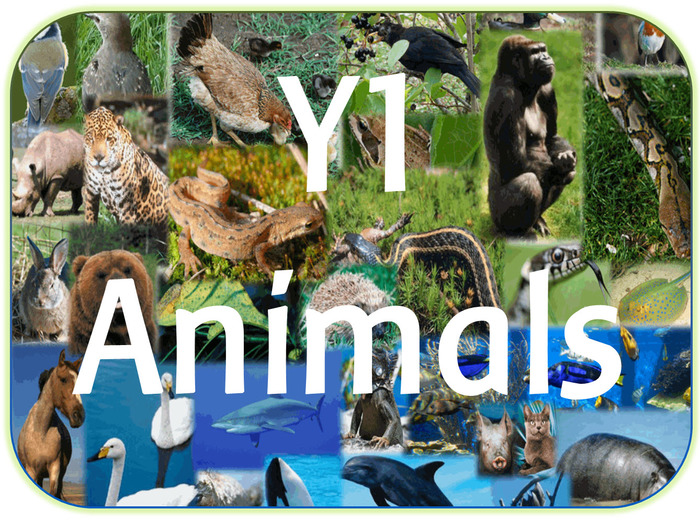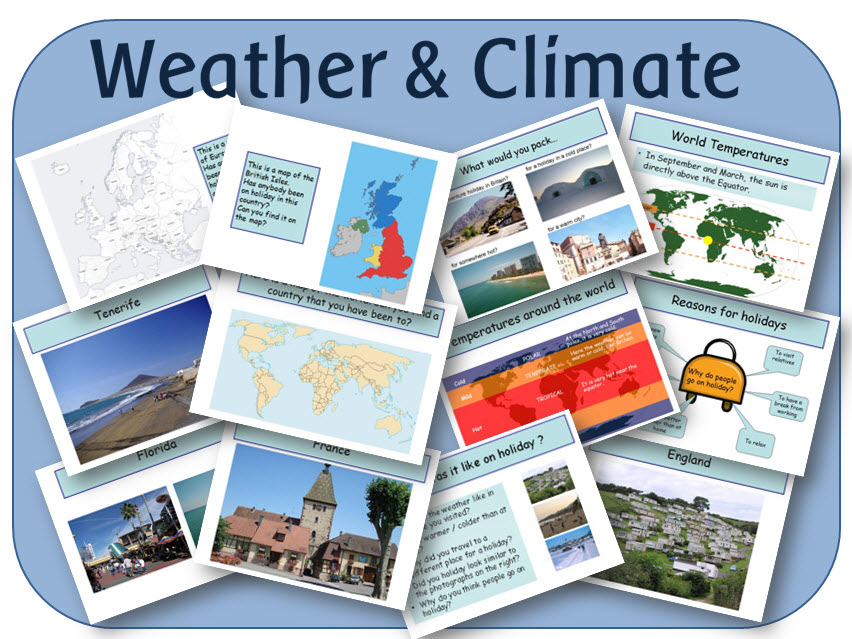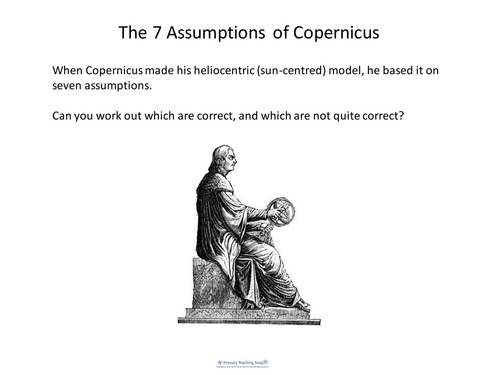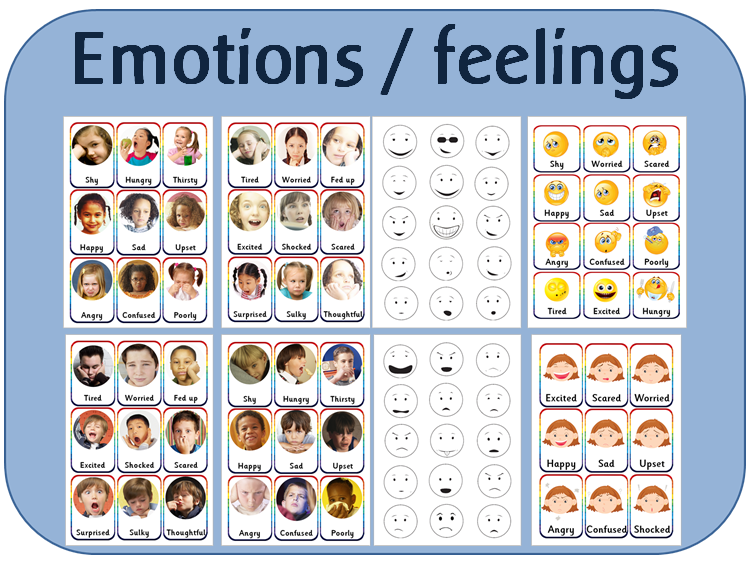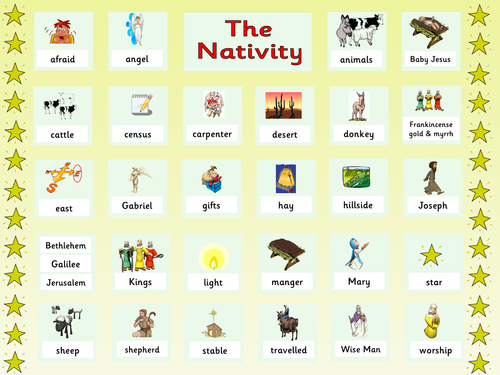
404Uploads
1035k+Views
667k+Downloads
Cross-curricular topics

Transport topic - canals powerpoint
Powerpoint on the development of canals and canals around the world today. Explains how canals were the method of transporting goods before the railways; how the barges were pulled along by horses; and how they were built.

Transport EYFS topic pack - powerpoints and activities
A set of 13 PowerPoint resources and several printable activities looking at different types of transport for early years.
POWERPOINT FILES:
5 Little men in a flying saucer: The song
A-Z of transport: Pictures for every letter of the alphabet, related to transport
How does it travel: A simple quiz
Old and new transport: Compares old and new kinds of transport
Row your boat: The song
The history of cars: Pictures of cars, how they have changed
The history of transport: From the Stone age to the modern age.
The Wheels on the bus: The song, with sounds and animations
Types of transport: Different kinds with labels
Transport 2: Different kinds, why we need it etc.
Transport shapes: Simple shapes in the environment related to transport
Vehicles that travel in the air: Pictures and facts
Vehicles that travel on water: Pictures and facts
Vehicles that travel on land: Pictures and facts
Transport advertisements - Adverts from the past 100 years showing old cars etc. Can be printed or viewed as a show.
PRINTABLE PDF ACTIVITIES:
Transport lotto: Game to print out and laminate
Shape car: A car to make by cutting out shape
Black and white pictures with headings to colour / write on
5 Little Astronauts - props, heading and rhyme
5 Little Firefighters - props, heading and rhyme
5 Little men in a flying saucer - heading, props, masks and earth

Portugal powerpoint and headings
The powerpoint covers the following:
Where is Portugal?: With maps showing the location of Portugal.
What is Portugal like?: Images of Portugal; different geographical features
Living in Portugal: Pictures of everyday life in Portugal - streets, shops, schools, houses etc.
Portuguese people: What life is like in Portugal - culture, traditional dress, language etc
The history of Portugal: a brief history from Roman times to present.

Year 1 Science - Variety of common animals - Animals including humans topic pack
A set of wpowerpoints and printable activities to teach children how to identify and name a variety of animals, describe and compare their structures and identify animals that are carnivores, herbivores and omnivores.

Space topic - powerpoint resources
10 powerpoints, looking at the Earth, Moon, Planets and Sun; the Space Race, Yuri Gagarin, Neil Armstrong and the moon landing, and the life of an astronaut:
PLANET EARTH - Answers to the following questions: How old is Earth? / How big is Earth? / What is Earth made of? / How much water is on Earth? / Does the Earth spin? / Why can we not feel the Earth move? / How hot is Earth? / Does Earth have an atmosphere? / Where is Earth? (demonstrates with pictures our position in the Solar System / Milky Way / Universe)
THE SUN - Answers the following questions - What is the sun? / How did the sun form? / What size is the sun? / Does the sun move around the Earth or does the Earth move around the sun? / What is the sun made of? It also describes a solar eclipse, sun spots, and the sun's core.
THE MOON - Answers the following questions - What size is the moon? / How far away is the moon? / How does the moon stay in the sky? / How long does it take the moon to orbit the Earth? / Do we see different sides of the moon? / Is it cold on the moon? / Is the moon a source of light? / Why does the moon seem to change shape? / What is it like on the moon? / How many people have walked on the moon? It also looks at gravity, the moon, and the sea.
PLANET FACT FILE - Looks at the 8 planets in the solar system and how they are studied. It explains the relative sizes of each planet, and compares them to the size of the sun. The planets each have their own page, with information such as: What is it like? What is it named after? Has it been visited by spacecraft? Can we see it? It contains a mnemonic to remember the order of the planets. It ends with a series of questions to see what the children have remembered.
THE SPACE RACE - A 14 page PowerPoint that looks at the main events that happened in the Space Race.
NEIL ARMSTRONG AND THE MOON LANDING - A biography of the life of Neil Armstrong, and how he became an astronaut, and the first man to walk on the moon. It describes the Apollo 11 mission, and the famous journey to the moon.
SPACE STATIONS - Describes the first space stations launched by Russia, and explains what a space station is. Talks about the International Space Station; how it is assembled, and what happens on it.
THE LIFE OF AN ASTRONAUT - A description of what life is like for an astronaut - Training / Work that astronauts do / Living on the International Space Station / Expeditions / Gravity in space / Weightlessness / Space food / Sleeping / Daily routines on the ISS / Clothing / Activities.

KS2 Geography: Weather and climate zones around the world topic - powerpoints and activities
A set of resources looking at holidays and world climate zones. It contains 5 PowerPoint lessons to use on an interactive whiteboard, and 4 pdf activities to print out.
POWERPOINTS:
Holidays: Where have we been on holiday; why do people go on holiday, with photo prompts, maps and explanations
World Climates: Description of Tropical, Temperate and Polar climates, where they are in the world, and a brief explanation why.
Planning a holiday: Description of 4 people to plan a holiday for. Links to online resources.
Country Research: Links to good websites for the children to research.
What do we need to pack: 4 locations for the children to look at and pack for.
PDF FILES
My packing list - to fit in with the PowerPoint file.
Printable world map - for the children to plan their holiday route.
Postcard - Blank postcard for the children to write.
Passport of places visited - for the children to fill in at the end of the topic.

The Rainforest - powerpoint lessons and activities
Series of lessons looking at where the rainforests of the world are, what they are like, their climate, flora and fauna, with a case study of the Amazon Rainforest.
INTERACTIVE WHITEBOARD RESOURCES (POWERPOINTS)
Rainforest introduction: A beginning to the topic, asking what children already know. It shows where all the world’s rainforests are located on a map, and describes the four main areas where rainforests grow. It explains the definitions of a tropical rainforest, and how it differs from a temperate rainforest. It ends with questions.
Rainforest climate: Explains the difference between climate and weather, and looks at world climate zones, and what they are called. It describes temperature, rainfall and humidity in tropical rainforests.
Rainforest plants: Looks at, and explains the different layers that grow in a rainforest. It explains plant adaptations, with questions on how different plants have adapted to living in the rainforest.
Natural resources in the rainforest: Looks at the different natural resources that are found in rainforest areas, such as palm oil, wood, the cacao tree, the rubber tree, and medicines. It explains their uses in a global society.
Saving the rainforest: Explores all the different reasons why the rainforest is disappearing - logging, settlement, agriculture, cattle rearing, road building, and extraction of natural resources. Discusses why it is important to save the rainforests, and what could happen if they disappear. It looks at different viewpoints - governments, companies, inhabitants, and the global community. It explains what is being done to save the rainforests, and what we can do to help.
The Amazon Rainforest: Locates the Amazon Rainforest, river, and basin on maps, and shows the different countries that the Amazon rainforest spans. Looks at the history of the rainforest, the people who live there, and the animals. Explains interdependence, and how important plants and animals in the rainforest are to each other. It explains the current threats to the rainforest, and why it is so important to the rest of the world.
PRINTABLE WORKSHEETS (PDF)
Locating the rainforests: A blank world map, for the children to locate the rainforests.
Rainforest layers: Drawing of the layers in the forest for the children to label and describe.

Seaside holidays (history and geography) - PowerPoint lessons and worksheets
A set of powerpoint lessons looking at the history and geography of seaside holidays, plus activities, worksheets and display resources.
POWERPOINTS
Seaside mind map: For AfL
Seaside introduction: Looks at why we go to the seaside, and how it differs from other places. It shows pictures of the countryside, town, and seaside, asking children to point out the differences.
What is the seaside like?: Looks at photographs to explore the human and physical features of coastal locations
When do we go on holiday and what do we see?: Looks at the different times of year we have school holidays, and how they coincide with religious festivals. It shows photographs of different objects and activities at modern seaside resorts.
Seaside in the past: 18 seaside photographs from 1880 until the 2000s. The children are asked to talk about what they see in each picture.
Human and physical features: A study of Blackpool, with photographs and maps, to explore the key human and physical features of the resort. The children can match features they see in photographs to a map. There are also links to British seaside tourist websites.
Looking at aerial photographs: Eight seaside locations to look for human and physical features.
How has the seaside changed?: Six pictures of seasides in the past to look at and discuss.
Pictures of seasides in the past: Six pictures of seasides in the past to look at and discuss.
The Victorian seaside: A look at how seaside resorts developed, and why people in Victorian times enjoyed going to the seaside. It looks at the different things that children did at the seaside, and compares them to what children do today.
ACTIVITIES:
Acrostic poem
Aerial photographs of different seaside locations showing pictures of coastal locations around the UK
Playing cards
Colouring pictures
My favourite environment worksheet
Packing list: Ready to go on holiday
My seaside holiday with seaside border, to write a description
Passport of places visited to itemise and describe where they have been
Passport: A blank passport to fill in
Postcard; blank to fill in
Stamps to use on the postcards
Seaside border paper for writing
Seaside holidays in the past: Compare 2 pictures to see how things were different in the past.
Seaside pictures past and present: For activities such as ordering events, describing, comparing etc
Survey – places visited: For a class survey
Topic covers x 4: With ‘The Seaside’ / ‘Seaside Holidays’ headings
Town country seaside description: To describe the different areas
UK jigsaw: England, Northern Ireland, Scotland and Wales
UK map: To mark out places visited
What can you find at the seaside: For making a list
What can you see?
Pictures of the town, seaside and countryside to describe
Plus lots more!

Florence Nightingale, Scutari and the Crimean war display pack
A set of images, headings, borders lettering, posters, a map of Florence's journey to Scurari and a word mat.
2 x versions of Florence Nightingale title: Prints out onto an A4 sheet
Florence Nightingale banner: prints on to 4 A4 sheets, or you can cut out the letters.
Artefacts: 5 A4 pages, with descriptions, including Florence Nightingale's lamp, owl and medicine chest.
Key vocabulary: 25 words the children may need to refer to.
Florence Nightingale: A timeline of her life - A detailed timeline, with pictures and text, beginning in 1820 when she was born. Prints onto 10 A4 pages to display horizontally on the wall.
Florence Nightingale border: to cut up and use as a display border (in 4 different colours, blue, black, brown, green and grey.
Florence Nightingale's life in pictures: 14 pictures at different stages in her life. (Can be used as display, or for the children to sort into date order.
Florence Nightingale picture timeline: as above, but dated.
Florence Nightingale word mat: with key vocabulary and corresponding pictures to help children in their writing.
Hospital before and after: 2 pictures of the hospital in Scutari with questions. Also included is a picture of a modern day hospital for comparison.
Journey to Scutari: the route that Florence took.
Nurses booklet - packing list: text from the actual pamphlet that the nurses travelling to Scutari received.

Year 4 Science - Sound powerpoints, worksheet, planning and display pack
A set of resources to help children understand about sounds and how they are made. It follows the objectives of the 2014 curriculum.
POWERPOINTS:
LISTENING TO EVERYDAY SOUNDS: Twelve everyday sounds to listen to as an introduction to the topic
HOW WE HEAR: Explains how we hear and looks at different parts of the ear and what happens when sound enters it. It asks questions to encourage the children to think about sound and hearing.
WHAT ARE SOUNDS: Explains that sounds are vibrations, discussing how sounds are made and how vibrations travel through air and through solids. Discusses loud sounds, the effects of wind, and how light and sound travel at different speeds, giving examples.
PROPERTIES OF SOUNDS: Explains pitch and volume; how volume changes with distance but pitch does not unless the source of sound is moving. It ends with an activity to describe a selection of sounds.
THE VOLUME OF SOUNDS: Activity to listen to sounds and think about distance and volume.
MAKING SOUNDS: A look at different musical instruments and how they make sounds. Includes drums, piano, and guitar. Suggests different objects the children cound use to create different sounds.
SOUND - MUSICAL INSTRUMENTS: Pictures of different instruments for the children to look at and work out how they make sounds.
WORKSHEETS:
SOUND CONCEPT MAP: For the children to record what they already know and what they would like to find out
LISTENING TO SOUNDS SHEET: To use on listening activities
TOPIC COVER X 2: With 'Sound' title; one with a picture, the other without.
DISPLAY:
A4 Sound title
A-Z lettering, with Sound title, one letter per A4 page
INVESTIGATION SHEETS:
A set of different sheets for investigations and recording
PLUS a medium term plan with activities and web links

Year 5 science - Famous scientists - Nicolaus Copernicus
A powerpoint about the life and discoveries of Copernicus, with a quiz about his seven assumptions.

Minibeasts / Insects for EYFS / KS1: PowerPoint lessons, activities and display pack
POWERPOINTS
ANTS:10 page presentation, includes where they live, body parts, life cycle, ant attacks, and food.
BUTTERFLIES: 15 page presentation, includes parts of a butterfly, life cycle of a butterfly, butterfly eggs, caterpillars, what caterpillars eat, how caterpillars change, what do butterflies eat, how do they fly, why are they different colours, and camouflage.
EARWIGS: 11 page presentation, including how they grow, what they eat, where they live, are they pests, how they are born, and interesting facts.
FLIES: 12 page presentation, includes what they eat, life cycle, houseflies, horseflies, mosquitos, crane flies, dung flies, and hoverflies.
HONEY BEES: 10 page presentation, includes what they eat, where they live, arethey pests, bee stings, life cycle, what they look like close up, how they make honey, and a bee rhyme
LADYBIRDS:10 pages, includes where they live, what they eat, life cycle, enemies, facts and a rhyme.
SLUGS AND SNAILS: 9 page presentation, includes where they live, what they look like, how they move, life cycle, what they eat, and what eats them.
SPIDERS: A 22 page presentation, includes spider body parts, legs, eyes, mouth, predators, webs, spiderlings, different types of common spiders - house spider, garden spider, woodlouse spider, wasp spider, spitting spider, and tarantula.
WOODLICE: 7 page presentation, including where they live, are they insects, what do they look like, what do they eat, does anything eat them, and life cycle.
WORMS: A 13 page presentation, includes can worms see, where they live, how they move, what and how they eat, how they breathe, their enemies, and how they are good for the soil.
MINIBEAST FACT FILE: 24 page presentation, recapping different minibeasts
I KNOW AN OLD WOMAN WHO SWALLOWED A FLY: -the rhyme
DISPLAY resources
A-Z LETTERING: Plus numbers and letters with a minibeast/leaf fill
MINIBEASTS BANNER: Prints onto 2 A4 sheets
MINIBEASTS DISPLAY BORDER: Attractive border to print out to frame your displays
INSECTS LETTERING: Prints onto 2 A4 sheets. You can cut the letters out out or display it as a banner
MINIBEASTS LETTERING:Prints onto 3 A4 sheets. You can cut the letters out out or display it as a banner
NUMBER LINE: Ant number line to 20
LIFE CYCLES: 3 pages - the life cycles of a bee, butterfly and fly.
ACTIVITIES
CARDS - WORDS AND PICTURES: Match the words to the minibeast pictures. 16 different minibeasts, 32 cards in total
MINIBEASTS FLASH CARDS: 39 different flash cards with photographs of common minibeasts. They can be used as cards or for display.
MINIBEAST CLIPART: Colourful clipart to print
MINIBEAST COLOURING: Large black and white pictures to colour
WRITING BORDER: Minibeast writing border; lined and unlined
TOPIC COVER: To colour in - 2 versions, insect/minibeasts

The Arctic: ( animals and Ocean) powerpoint,display, worksheets and activities
A set of printable resources (display, worksheets, games and activities) plus a PowerPoint about the Arctic, the Arctic Ocean and animals in the Arctic.
The set contains:
The Arctic PowerPoint. It covers:
What is the weather like in the Arctic?
Where is the Arctic?
What is the Arctic Circle?
The North Pole
What plants grow in the Arctic Circle
What animals live in the Arctic Circle - herbivores and predators
Arctic birds
Arctic whales
Arctic sea animals
Humans and the Arctic
2 A4 headings
Alphabet polar bears
Anagram worksheet - Arctic animals
A-Z lettering with an snowy background; all letters of the alphabet, plus numbers and punctuation, plus ‘The Arctic’ in large letters
Bookmarks to cut out and colour, with polar bears
Display border - with pictures of polar bears
Cards - Arctic animals for games or display
Factfile sheets - for children to research and fill in
Flags - The countries bordering the Arctic Circle
Map showing satellite imagery of the Arctic Circle
A map of the Arctic Circle
Masks - black and white animals from the Arctic
Number line to 20 with digits and written numbers with a polar bear background
Passport to fill in for a trip to the Arctic
Pictures of Arctic animals to cut out and use in topic work
Pictures of Arctic animals to print out for display
Postcard to write from the Arctic
Set of posters with explanations and photographs of:
The location of the Arctic
Arctic plants
The Inuit
Arctic animals
Polar bear
Wolverine
Arctic fox
Arctic owl
Arctic tern
Snow geese
Arctic hare
Arctic squirrel
Lemming
Seal
Muscox
Caribou
Walrus
Topic covers - 3 different versions
Vocabulary cards - Arctic adjectives for composition
Writing border sheets - lined and unlined
Bundle

Year 3 Science topic pack
This set contains resources for the 5 different science topics in Y3. The resources include powerpoint lessons, worksheets, display and outline planning documents.

Feelings / emotions cards
Four different card sets containing different emotions. The sets include:
18 cards showing different emotions with photographs of girls’ faces
18 cards showing different emotions with photographs of boys’ faces
12 cards with different emoticons
9 cards with girl clipart faces
Plus 2 A4 sheets of black and white emoticons to use for activities with the children.

King John & Magna Carta - Powerpoint, activities and display
POWERPOINTS
KING JOHN AND MAGNA CARTA: A 26 page powerpoint in 3 sections
Life at the beginning of the 13th century: A look at what medieval life was like in England, inludes feudalism, manors, markets, monasteries, peasants and wars
Who ruled England at the beginning of the 13th century: The first Plantagenet Kings, Henry II and Richard I; King John, whether he was a good or bad king, the reasons the barons rebelled and wrote the Magna Carta, civil war, the death of King John..
The Magna Carta: A look at why it was written, what was in it, and its relevance today.
CLAUSES FROM THE MAGNA CARTA: 12 Clauses from the document; can be viewed as a show or print out for display.
ACTIVITIES
Topic front cover x 2
Writing border - King John
Writing border - Magna Carta
Medieval battles writing/recording sheet
Medieval village peasant life x 3 writing/recording sheets
Parchment: For the children to write their own clauses
Magna Carta (in word, translated copies)
DISPLAY
A4 Heading
Banner: Prints onto 2 A4 sheets
Lettering (A-Z with Magna Carta background)
Display borders
PLUS an outline planning document.

Dinosaur activities
Dinosaur colouring pages, info cards to fill in, bookmarks, topic covers and an acrostic poem worksheet.

Queen Elizabeth II and the Royal family
A set of resources looking at the royal family and the young Queen Elizabeth II.




